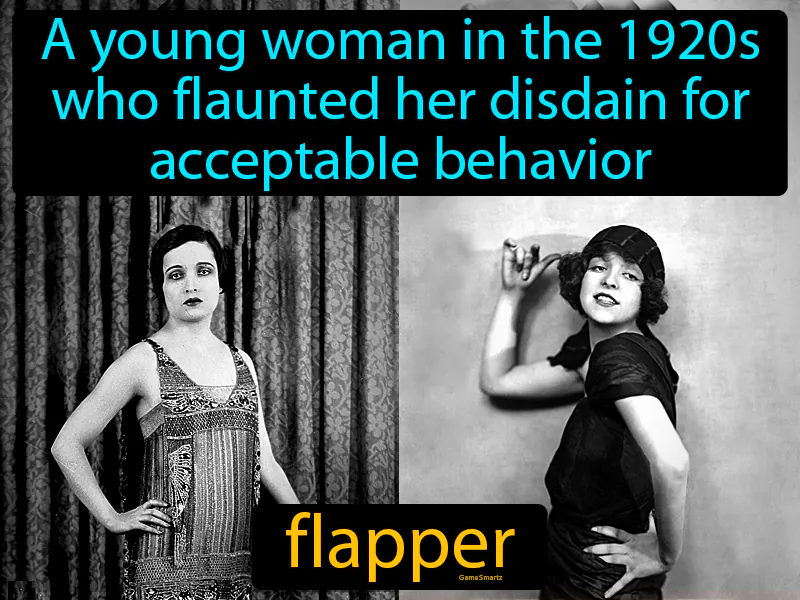Flapper
Flapper: Easy to understand
In the 1920s, flappers were young women who challenged traditional norms by wearing shorter skirts, bobbing their hair, and engaging in behaviors that were considered bold, like smoking and dancing in public. This cultural shift was part of the larger Roaring Twenties, a time of social and economic change following World War I, where people sought more freedom and self-expression. Flappers responded to the restrictive societal roles for women and symbolized a push for gender equality and independence. Today, the spirit of the flappers lives on in movements advocating women's rights and freedom of expression. For example, when young women today wear what they choose or pursue careers traditionally dominated by men, they echo the flappers' legacy of challenging societal expectations.

Practice Version

Flapper: A young woman in the 1920s who flaunted her disdain for acceptable behavior. Flapper. A flapper was a young woman in the 1920s known for her bold fashion, independence, and challenging of traditional norms.